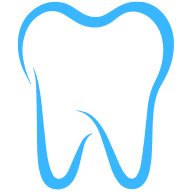7 Ways to Improve Patient Experience in Dentistry
Transforming the dental experience has become a top priority for practices seeking to thrive in today's competitive healthcare landscape. This article explores expert-backed strategies to enhance patient satisfaction and comfort throughout their dental journey. From leveraging cutting-edge technology to creating serene environments, these insights offer practical ways to revolutionize patient care in dentistry.
- Enhance Every Step of the Patient Journey
- Explain Procedures and Use Comfort-Enhancing Technology
- Implement Digital Check-In and Paperless Systems
- Offer Personalized Post-Treatment Care Plans
- Create a Calming, Spa-Like Waiting Area
- Provide Pain-Free Anesthesia Options
- Use Intraoral Cameras for Visual Education
Enhance Every Step of the Patient Journey
Understand that every single patient interaction is part of the experience, and they all add up. Take a look at your entire patient journey through the eyes of an actual patient. This includes the booking process, arriving at the office, checking in, the waiting room, sitting in the chair, undergoing a cleaning or a procedure, the checkout process, insurance submission, etc. There are opportunities in each of these stages to enhance the experience, making it easier, more convenient, more friendly, and even more fun.

Explain Procedures and Use Comfort-Enhancing Technology
Many patients feel anxious when visiting the dentist, mainly due to fear of pain or the impersonal nature of the treatment. To address this, it would be incredibly beneficial if dental professionals could spend a bit more time explaining procedures in a friendly and reassuring manner. This not only demystifies what will happen but also builds trust and comfort between the dentist and the patient.
Another useful improvement would involve integrating more state-of-the-art technology that speeds up procedures and enhances comfort. For example, using the latest pain-free laser treatments or offering virtual reality headsets that entertain and distract during more lengthy procedures could revolutionize patient perceptions and minimize anxiety. Ultimately, small changes in communication and technology can significantly enhance the overall dental visit, making it less daunting and more of a positive health checkup. Such enhancements ensure that visits to the dentist are not just bearable but actually pleasant experiences.

Implement Digital Check-In and Paperless Systems
Implementing digital check-in and paperless appointment systems can greatly enhance the patient experience in dentistry. By adopting these modern technologies, dental practices can reduce waiting times and streamline the entire check-in process. Patients appreciate the convenience of filling out forms electronically before their visit, saving time and reducing stress upon arrival.
This digital approach also helps maintain accurate and easily accessible patient records. It's an environmentally friendly option that showcases the practice's commitment to efficiency and sustainability. Dental offices should consider upgrading their systems to improve patient satisfaction and operational efficiency.
Offer Personalized Post-Treatment Care Plans
Offering personalized post-treatment care plans and follow-ups is a powerful way to improve patient experience in dentistry. This approach shows patients that their well-being is a top priority even after they leave the office. Tailored care plans help patients understand their unique needs and how to maintain their oral health at home.
Regular follow-ups, whether through phone calls, emails, or text messages, demonstrate ongoing care and allow for quick addressing of any concerns. This personalized attention can significantly boost patient trust and loyalty. Dental practices should invest time in developing comprehensive post-treatment protocols to enhance patient care and satisfaction.
Create a Calming, Spa-Like Waiting Area
Creating a calming, spa-like atmosphere in waiting areas can transform the dental experience for many patients. By designing a soothing environment with comfortable seating, soft lighting, and pleasant decor, dental offices can help alleviate anxiety and stress. Incorporating elements like calming music, aromatherapy, or even a small water feature can further enhance the relaxing ambiance.
This approach helps patients feel more at ease before their appointment, potentially reducing overall dental anxiety. Dental practices should consider consulting with interior designers specializing in healthcare spaces to create an optimal waiting area experience for their patients.
Provide Pain-Free Anesthesia Options
Providing pain-free anesthesia options for nervous patients can significantly improve their dental experience. Techniques such as computer-controlled anesthesia delivery systems or needleless jet injectors can make the process more comfortable and less intimidating. These advanced methods allow for more precise and gradual administration of anesthesia, reducing discomfort and anxiety.
Offering choices in anesthesia delivery empowers patients and helps them feel more in control of their dental visit. Dental professionals should stay updated on the latest pain management techniques and consider investing in these patient-friendly technologies to enhance comfort and trust.
Use Intraoral Cameras for Visual Education
Utilizing intraoral cameras to educate patients visually can greatly enhance their understanding and engagement in dental care. These small, handheld devices allow dentists to capture and display high-resolution images of a patient's mouth on a screen in real-time. This technology enables patients to see exactly what the dentist sees, making it easier to explain conditions, treatments, and preventive care.
Visual aids can significantly improve patient comprehension and decision-making regarding their oral health. Dental practices should consider incorporating intraoral cameras and investing in staff training to effectively use this technology for patient education and improved communication.

